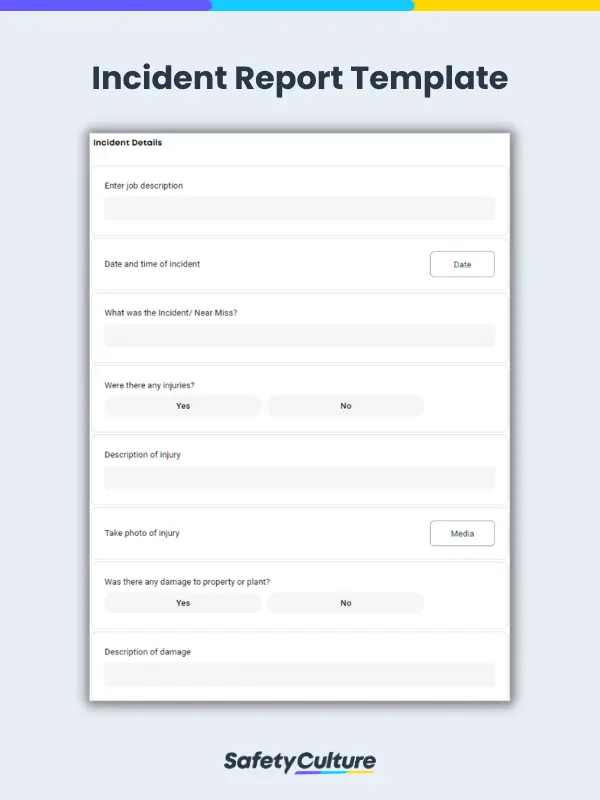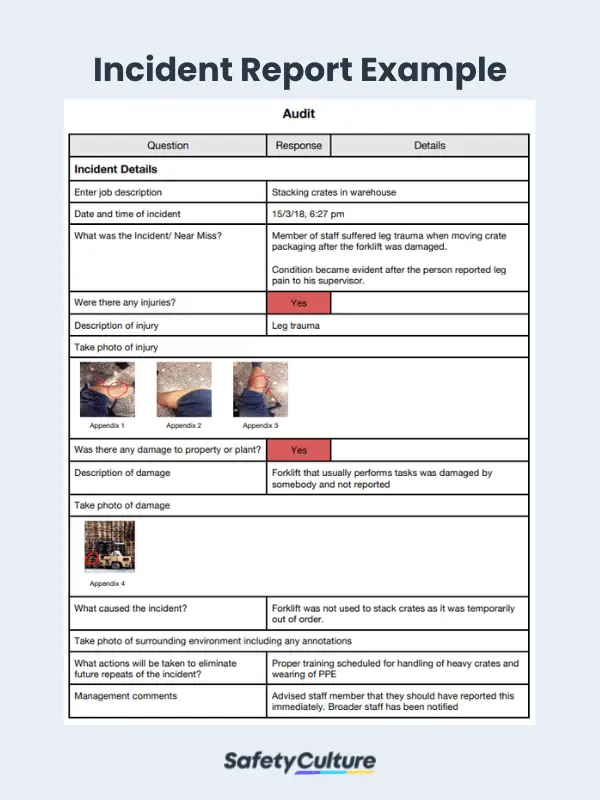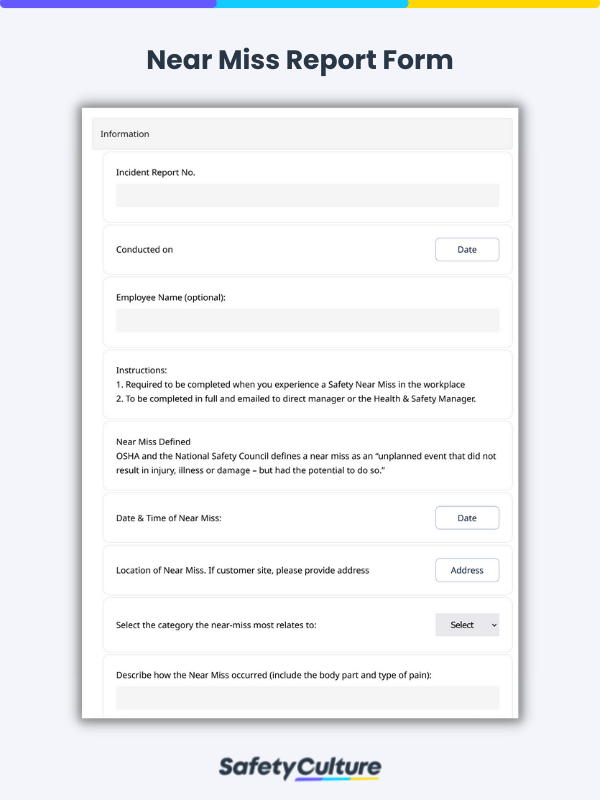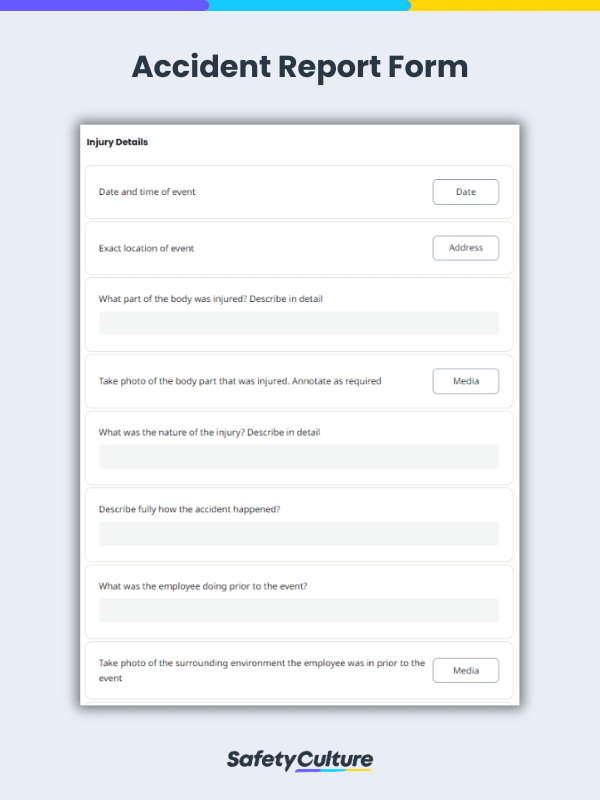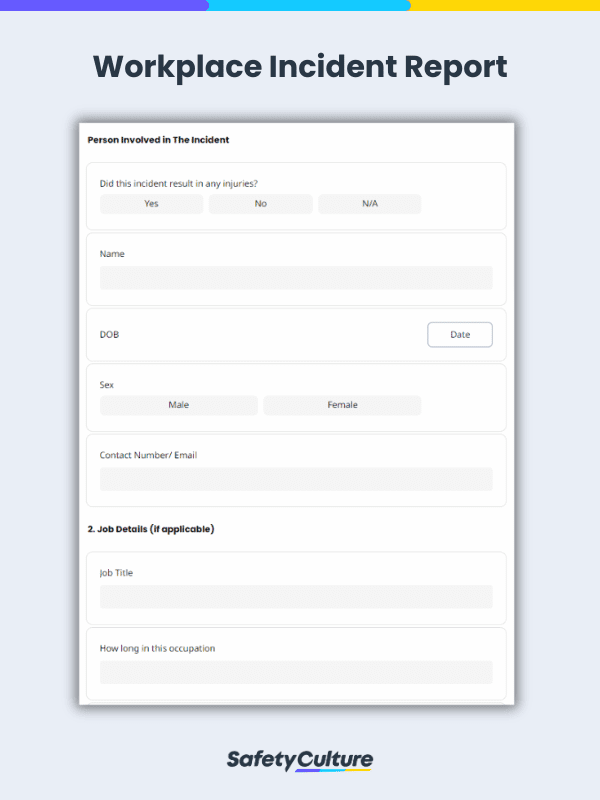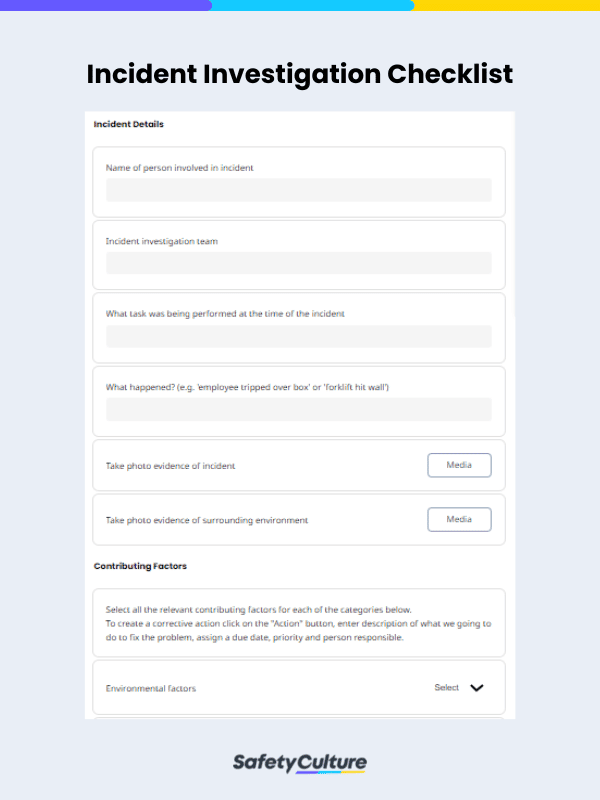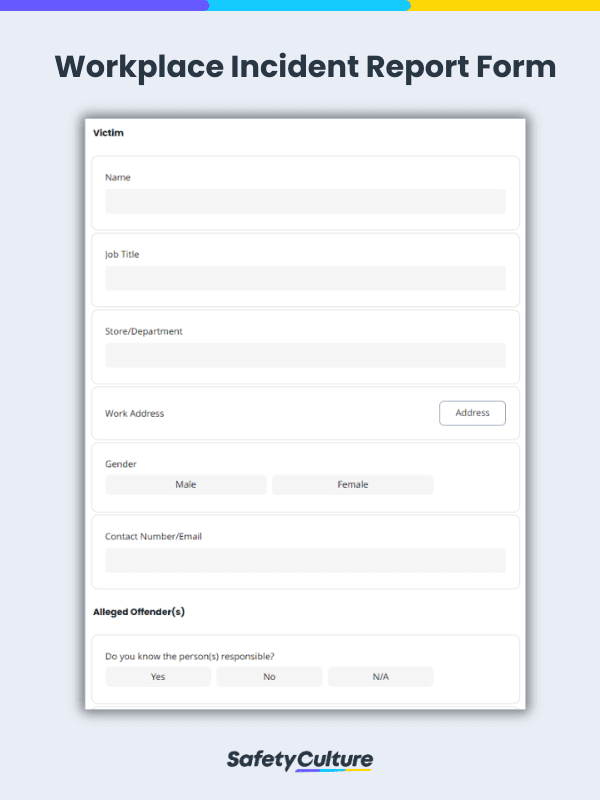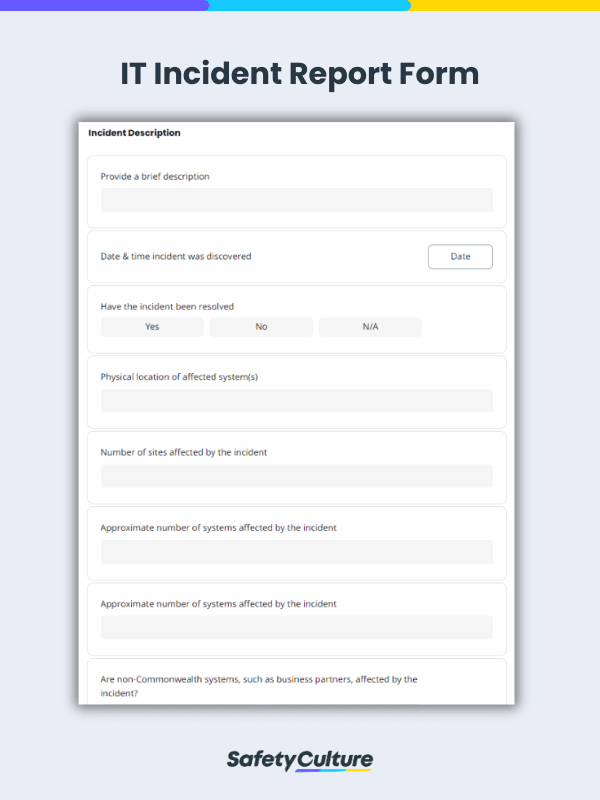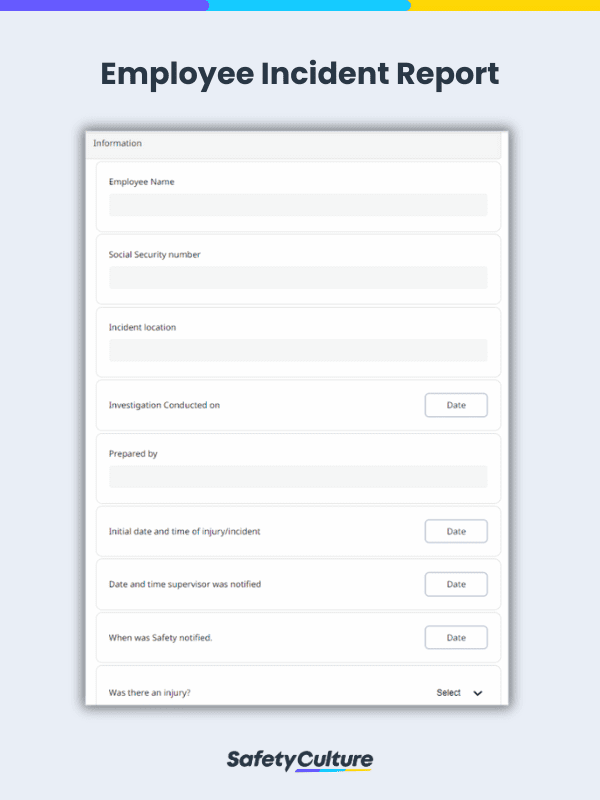What is an Incident Report Template?
An incident report template is a tool used to document any event that may or may not have caused injury, illness, or property and equipment damage in the workplace or worksite. An incident report form must be filled out at the time the incident occurs for an accurate recount of events. Information recorded in an incident report form is used to investigate the root cause. Identifying the root cause will help in establishing the appropriate control measures to prevent the recurrence of the same incident.
How Do You Write an Incident Report with a Template?
Systematically writing an incident report helps the reporter gather all the necessary details to make the incident report accurate and factual. Here are three steps on how to write a good incident report using a template:
- Know what information to collect – A checklist can be a helpful guide to avoid missing out on important details especially at times when you need to submit the incident report as soon as it is needed.
- Gather the most accurate and factual data – Providing the most accurate and factual information is the topmost responsibility of the reporter. Opinions, biased statements, and vague information should be avoided.
- Provide as much evidence as possible – Add photos and illustrations to strengthen the validity of the incident report and support the statements given by witnesses.
What to Include in Your Incident Report Template
Generally, an incident report template has fields for the following:
- Name of the person preparing the report
- Names of the people involved in the incident
- Location
- Incident details such as:
- Date and time
- Description of incident
- Injury status, if any
- Status and condition of the environment, if affected
- Cause of incident
- Photos related to incident
- Actions to take to ensure the incident does not happen again
- Comments
- Sign-off
Injury Incident Report Examples
The following are a few real-life examples of incident reporting in different aspects of workplaces:
General Incident Report Sample
“On Monday morning, September 4, 2020, at 7 a.m. in Cehenna Express. located in 5th Avenue, Pandemonium, one of the warehouse staff (Harvey Kinkle) slipped while transferring a piece of 95-lbs equipment to a nearby stock room. Upon further analysis, the root cause of the incident is believed to be the wet flooring due to a leaking water tank in the same location. Adding the fact that Harvey has poor vision, he carried the load himself without seeing the water on the floor.
When Harvey fell, his colleague, Nick, who is about to enter the warehouse, heard a nearby bang that urges him to check what happened. Nick quickly ran to help Harvey. After reporting the incident to the shift supervisor, Mary Wardwell, they decided to call the Pandemonium hospital for an ambulance. Harvey said his head fell badly to the ground when he lost his balance, causing severe headaches, although there was no blood from his injuries.
Harvey was admitted to the Pandemonium General Hospital and a skull fracture was confirmed. Harvey will be out of work for 2 months.
The supervisor is currently working with the safety personnel (Edward Spellman) to evaluate the condition of the floor, the location and condition of the water tanks on the floor, and the lighting systems installed. Also, an eye medical test will be administered to all Cehenna Express staff.”
Fall Incident Report Sample – Construction
“Whilst working as part of the roofing crew on a large residential project, the apprentice was required to climb the 8-meter-high scaffolding to retrieve some tools from the roof at the end of his shift. He put the tools in a bucket and started to climb down with the bucket in his hand. He thought it would be faster to climb the outside of the scaffolding rig. As he climbed onto the outside of the scaffolding, he lost his footing and fell 8 meters to the ground.
The roofing crew team leader called an ambulance as the first aider attempted to revive him. The apprentice was in a coma for three months and after a lengthy period in therapy was eventually able to walk with aids. He was unable to work in the construction industry as a result of his injuries.
The H&S manager investigated the accident using witness statements from the roofing crew and a review of site documentation. The root cause was determined to be lack of adequate supervision and poor communication of safety site rules.”
In the event involving an injury, you can use an accident report form as your injury report form to capture all important information and immediately report the accident. Here’s a sample incident report in a PDF format.
FAQs about Incident Report Templates
Incident report templates should be completed as soon as possible or during end-of-shift reports to preserve key details needed for insurance and regulatory purposes, such as recording OSHA 300 forms (including the OSHA Form 300A).
The incident report template should be used by anyone who witnesses or is involved in an incident or accident. This includes employees, managers, supervisors, contractors, or anyone else in the organization who may have important information related to the incident.
Going digital would be the way to create, manage, and fill up an incident report template. By going digital, you can reduce paper waste, improve reporting times, and ensure documentation processes are up to date as everything will be easily accessible.

